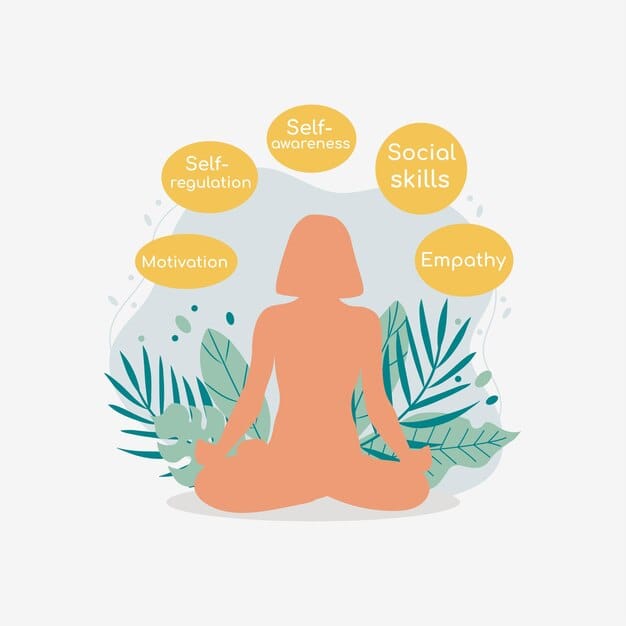How Movement Can Support Healing in Therapy

Incorporating Somatic Practices in Virtual Therapy
Even in virtual therapy, somatic practices can be powerful tools for emotional and physical healing. These approaches focus on the connection between the mind and body, helping to relieve stress, process emotions, and build a sense of safety. Every practice is adapted to fit your comfort level and personal goals—there’s no right or wrong way to participate, and you’re always in control of what feels best for you.
Renowned trauma expert Dr. Bessel van der Kolk, author of The Body Keeps the Score, highlights that trauma is stored in the body, not just the mind. Somatic practices, such as mindful movement, breathwork, and body awareness techniques, can help regulate the nervous system and support healing beyond talk therapy.
Examples of Somatic Practices in Therapy:
— Breathwork & Grounding Techniques: Simple breathing exercises to regulate the nervous system and create a sense of calm.
— Gentle Seated or Standing Movement: Light stretches or mindful movement to release tension and increase body awareness.
— Progressive Muscle Relaxation (PMR): A guided technique to systematically tense and relax muscle groups, promoting relaxation and connection to the body.
— Somatic Awareness Practices: Bringing attention to physical sensations, posture, and breath patterns as a tool for self-regulation and emotional processing.
— Guided Visualization & Body Scans: Connecting with different areas of the body to cultivate safety, awareness, and presence.
— Tapping & Bilateral Stimulation (EMDR-Informed Techniques): Gentle, rhythmic tapping or guided movements to support emotional processing and nervous system regulation.
— Yoga: As a certified RYT 200 yoga instructor, I integrate principles of yoga to support nervous system regulation, enhance mind-body awareness, and promote somatic healing through gentle, accessible movement. This approach is not an exercise class but a therapeutic movement practice tailored to support the healing process for chronic health conditions, pain management, trauma recovery, and other areas of mental and physical well-being. It offers inclusive practices that foster holistic healing and overall wellness, helping individuals navigate and address various therapeutic needs.
What to Expect: Safety, Choice & Comfort
✓ Choice & Consent – Movement is always optional, and you are in full control of what feels right for you. We will discuss whether somatic approaches align with your goals, and you can opt in or out at any time.
✓ Fully Remote & Non-Contact – Since all services are provided virtually, all guidance will be verbal and demonstrated in a way that allows you to engage at your own pace, in your own space.
✓ Client-Led & Respectful of Boundaries – Any movement suggestions will be introduced slowly and mindfully, respecting personal boundaries and emotional responses. There is no expectation to engage in any practice that feels uncomfortable.
✓ Therapeutic, Not Fitness-Based – This is not a yoga or fitness class. Any movement introduced is meant to support emotional regulation, nervous system balance, and self-awareness, rather than physical conditioning or performance. No prior experience is needed.
✓ Medical Considerations – If you have any health concerns, please consult with your doctor before engaging in movement-based practices. Therapy is not a substitute for medical advice or treatment, and your safety and well-being are always the priority.
✓ Training & Qualifications – I am a certified RYT 200 Yoga Instructor. This training enhances my ability to integrate movement techniques that support nervous system regulation, mind-body awareness, and healing for a wide range of conditions, including chronic health issues, pain, trauma recovery, and other therapeutic needs. My approach aligns with evidence-based clinical practices to promote overall well-being.
A Personalized Approach to Healing
Healing looks different for everyone, and movement is just one option within therapy. Together, we can explore what feels most supportive for you. Whether or not movement is incorporated, therapy is about finding what works best for you.
If you have any questions about integrating somatic practices into therapy, we can explore them together in a way that feels comfortable, accessible, and aligned with your needs. 💙
Research:
- 📖 Bessel van der Kolk's Contributions – Dr. Bessel van der Kolk, author of The Body Keeps the Score, has extensively studied how trauma is stored in the body and how movement-based approaches like yoga can support trauma recovery by helping regulate the nervous system. (besselvanderkolk.com)
- 📖 Harvard Health on Yoga for Mental Health – A 2024 article from Harvard Health highlights that yoga can help improve symptoms of depression, PTSD, and anxiety, particularly in older adults. (health.harvard.edu)
- 📖 The Role of Yoga in Emotional and Physiological Regulation – A 2020 study examines how yoga enhances interoception (awareness of internal body sensations), promoting self-regulation and resilience in individuals with trauma. (apa.org)
Disclaimer
Somatic practices in therapy serve as a therapeutic tool to support emotional regulation, stress management, trauma recovery, and the management of chronic pain and health conditions. These practices are not a replacement for medical treatment, and it is important to consult with your healthcare provider before engaging in new movement-based approaches. All movement incorporated into therapy is optional, non-contact, and adapted for virtual sessions in a way that prioritizes safety, choice, and comfort. Participation in these practices does not constitute a fitness or yoga class, and therapy services provided by Thrive Within Therapy Services, LLC, adhere to ethical guidelines set forth by the social work profession.